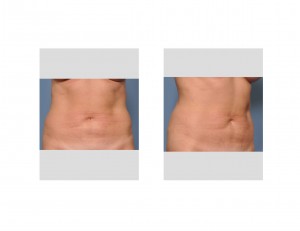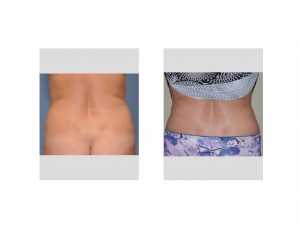Background:Liposuction is a well established method of surgical fat removal. While it may seem crude in the manner in which it is performed, its effectiveness is undeniable in extracting large volumes of fat. The extraction method is primarily based on pulling fat through a tube (cannula) based on a negative pressure of about one atmosphere. The size of this cannula determines how fast the fat is removed. As the size of the cannula increases so does the risk of visible skin irregularities afterwards as it ‘punches’ bigger holes in the fat tissue.
When most people think of liposuction, they envision people who are grossly overweight or just plain fat. The reality is that most liposuction patients, while not thin, are far from being obese. Most are likely in the 15 to 30lb above their ideal body weight category and just can’t lose the stomach or skin rolls that they have. Others have an inherited or congenital fullness of the thighs, knees and arms that is not exercise and diet-responsive. Liposuction is also used as a complement to other body contouring procedures such as tummy tucks, armlifts and breast reshaping.
But there is a distinct subset of liposuction patients who actually are reasonably lean and do not have fat rolls in the classic sense. They may have always been very thin and now have some unacceptable thickening of some body areas as they have aged. Or they may be very athletic and want further body refinements that they just can not achieve with rigorous diet and exercise. These represent a more finesse form of liposuction that is much lower in the volume of fat that needs to be removed. This is best known as liposculpture since the objective is shaping more than it is about high volumes of fat removed. To avoid irregularities in these small volume extractions, it is necessary to use small cannulas.

Under anesthesia, she was treated with Smartlipo. Through small stab incisions inside the belly button and at the lateral waistline and flanks, she was initially infiltrated with a Hunstad solution. Approximately 10,000 joules of laser energy was delivered by a fiberoptic probe to the problem areas. Then a 3mm cannula was used to extract 575cc of aspirate in a cross-tunnel fashion from the lower abdomen and 175cc of aspirate from the flank areas in a radiating linear fashion. The entrance incisions were not closed to allow for drainage afterwards. She was placed in a circumferential binder with absorbant pads underneath.


Case Highlights:
1) Small volume or discrete areas of liposuction can be described as liposculpture or finesse body contouring.
2) Liposculpture is used for average weight to thinner patients who need discrete areas of contouring, usually of the stomach, waistline and into the back. Smartlipo can help not only in the removal but can produce some slight skin retightening as well.
3) In small areas of fat removal and body contouring the biggest risk is that of skin irregularities and asymmetry after surgery.
Dr. Barry Eppley
Indianapolis, Indiana


